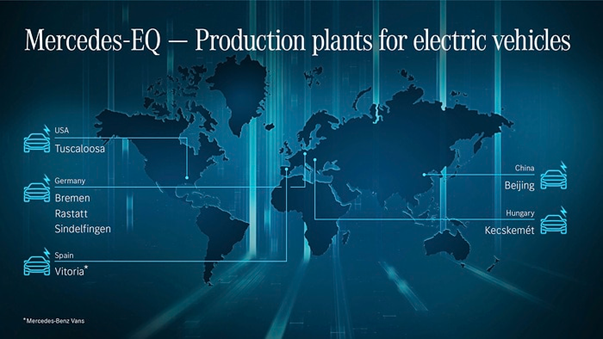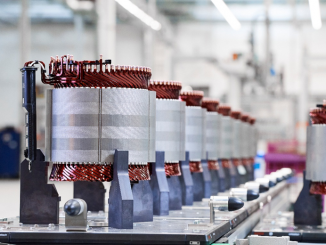By Edgar Matas Hidalgo, Siemens Digital Industries Software

Introduction:
In the high-speed race to electrification, the design process of electric machines presents engineers with several challenges to accelerate product development, sustainability, and overall electric system performance. Nowadays, a successful design is dependent on your simulation strategy.
The Race Against Time
In their quest to meet market demands, engineers find themselves racing against the clock. Traditional design processes are time-consuming, with product development cycles lasting several years. In the automotive industry, a drivetrain development cycle can easily extend to 3 to 4 years. To be competitive, OEMs are pushing hard to cut this time significantly, ideally under 2 years. Realistically, there is no way they will achieve this without cutting at least one physical prototyping round.
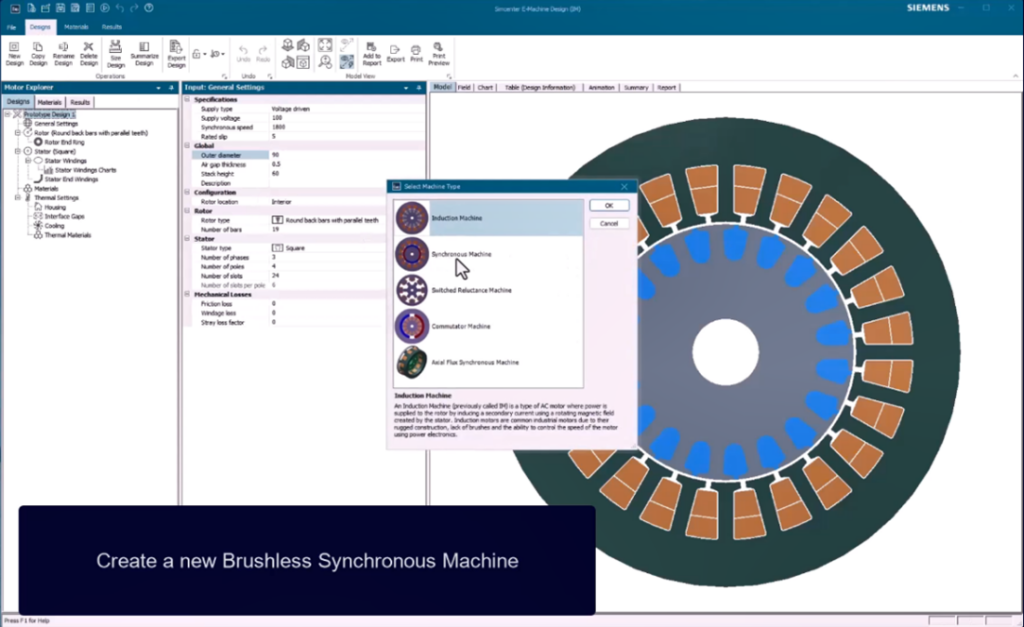
Simcenter E-Machine Design offers engineers a template-based approach that allows them to accelerate their design exploration and evaluate hundreds of designs per week without being simulation experts. Additionally, engineers can adapt the level of precision they require to each design step, ranging from equivalent circuits that provide quick feedback even in complex axial flux machines to detailed finite element simulations.
But if you really want to accelerate, the e-motor cannot be designed in isolation. Optimizing the overall electric power system is much more complex than getting your best components together. This is because they influence each other. For example, changes to your gear ratio can affect your e-motor efficiency and battery life. By integrating realistic e-motor models within system simulation, engineers are unlocking the next level of optimization and gaining a competitive edge.
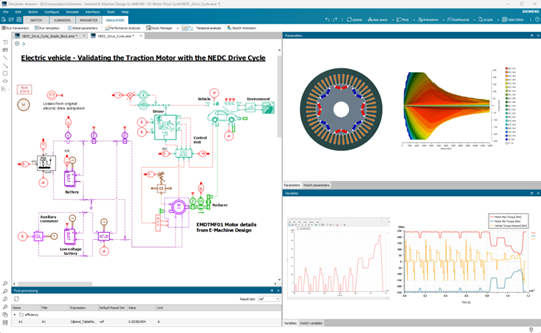
Tackling Multi-Physics Complexity as early as possible
Electric machines are complex devices governed by multiple physics principles. Engineers grapple with balancing electromagnetics, thermal integration, and NVH performance simultaneously. Neglecting any aspect may lead to design flaws and costly iterations. Simcenter provides access to multi-physics from early design stages. It emphasizes the significance of thermal integration, as even a slight increase of 10 °C in temperature can reduce a machine’s lifetime by half. By predicting electro-thermal and NVH performance from the beginning, engineers can frontload potential failures and address issues early in the design stage.
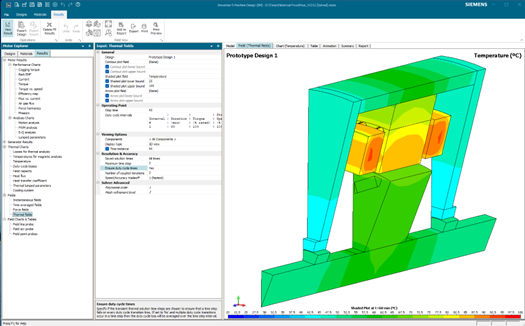
The Collaborative Conundrum
Collaboration among different departments is crucial for efficient design processes. However, engineers often struggle with the lack of synchronization and information sharing. Traditional simulation tools do not make this any easier. Instead, Simcenter introduces them to a new era of collaboration through CAD and PLM integration. With this powerful platform, departments can work based on a single source of truth, linking components, and sharing results seamlessly. Regular meetings enable engineers to discuss design changes, quickly propagate them through the system, and run simulations continuously. The teams adopting this way of working experience improved efficiency, more agile workflows, and faster design iterations.
Don’t wait for your prototype to integrate the e-drive
Integrating electric machines, inverters, and transmissions poses a significant challenge for engineers. Traditionally, integration occurs only during physical prototyping, leading to unforeseen problems and costly iterations. Simcenter offers a different approach, allowing engineers to virtually prototype each component individually and virtually integrate them. This virtual integration reveals integration issues early in the design cycle, enabling engineers to address them proactively. The more common integration scenario is probably the mechanical integration where the engineers want to discover how coupled effects between the e-machine, the housing and the transmission produce unforeseen NVH issues. Following that, thermal integration helps engineers complete a detailed assessment of the overall cooling system performance, which is of increasing importance with the rising complexity of cooling strategies. It is also worth mentioning the electronics integration, where putting together realistic models of the e-machine and the inverter helps engineers unlock the next level of optimization.
By running numerous virtual prototypes and optimizing designs, engineers gain confidence in the final physical prototype, reducing the number of iterations required and delivering the “right design” to customers sooner.
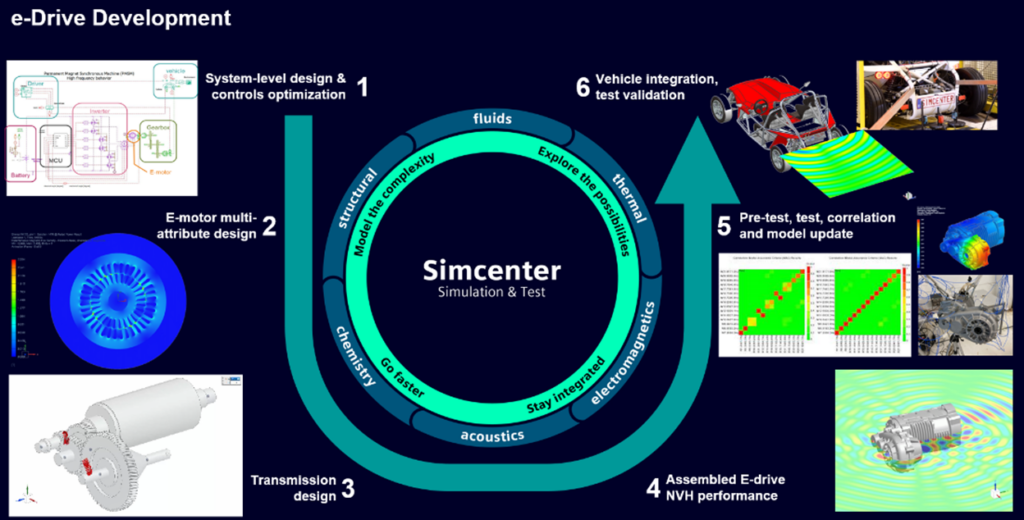
Transforming engineering with Simcenter
Electric machines have been manufactured for many years in a variety of industries and applications. Despite this extensive experience, manufacturers find themselves facing formidable challenges as they try to meet their customers’ needs. The good news is that simulation tools can mitigate these challenges by accelerating the design process, capturing the full complexity of multi-physics problems, streamlining collaboration, and enabling virtual integration.
Simcenter tools transform engineering workflows and allow engineers to conquer their challenges and deliver more sustainable solutions in the competitive landscape of electric machine design.
About the author:

Edgar Matas Hidalgo is the Head of Product Management – Electromagnetics Simulation, for Siemens Digital Industries Software. After completing his studies as an aerospace engineer and his research, which included identifying and describing the flow effects that are the main contributors to noise, Edgar joined Siemens as the Product Manager for acoustics simulation. Since 2017 he has been working as product manager for different simulation software, including acoustics or manufacturing simulation tools. Currently he heads the product management team with responsibility for the Siemens portfolio of low frequency electromagnetics simulation software.
For more information, see www.sw.siemens.com/en-US/.

